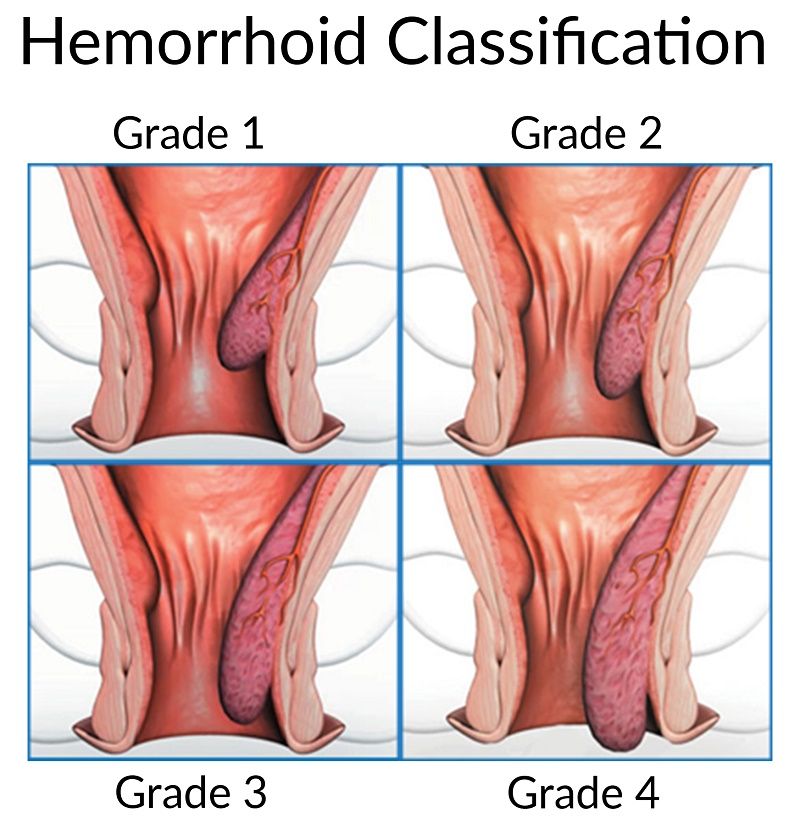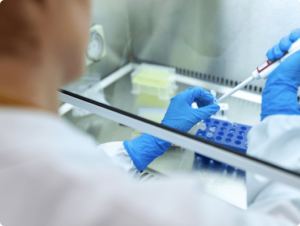Piles (Hemorrhoids): All You Need To Know

What is Piles (Hemorrhoids)
Piles or Hemorrhoids (from the Greek haima – “blood”, roe – “current”) is one of the most common diseases in proctology, which is based on the pathological state of the cavernous plexus of the rectum, accompanied by a stagnation of blood in them. Hemorrhoids are manifested by periodic bleeding from the nodes, their loss from the anal canal, and frequent inflammation. Hemorrhoids affect men and women equally.
Classification of Piles (Hemorrhoids)
Internal hemorrhoids
With internal hemorrhoids, there is a varicose expansion of hemorrhoidal veins, which are located deep in the anal canal, therefore, during a normal examination, such hemorrhoids are not visible. To see them, one has to resort to special research methods: anoscopy, rectoscope. Also, such nodes can be detected with a digital rectal examination. A symptom of a disease such as prolapse of hemorrhoids can cause bleeding if they are injured during the act of defecation. With the significant weakness of the ligamentous apparatus of the rectum, such nodes fall out during bowel movements or significant straining. Also, internal nodes may be impaired when they fall out and the anal sphincter spasm. Most often, the first signs of internal hemorrhoids are bleeding.
External hemorrhoids
In this type of hemorrhoid, the hemorrhoids are marked on the outside and should not be confused with the prolapsed internal hemorrhoids. Most often, external nodes are manifested by thrombosis. As a rule, there is no bleeding from the external nodes, since they are not injured during bowel movements. Such hemorrhoids are painful and unpleasant during bowel movements. But the constant stagnation of blood in them can lead to the formation of blood clots in them. Externally, external hemorrhoids can be of various sizes, from 3 mm or more, depending on its blood supply. The external hemorrhoidal node is usually covered with skin, while the prolapsed internal node is usually covered by the mucous membrane of the anal canal.
Combined hemorrhoids
As the name implies, with combined hemorrhoids, the patient has a combination of external and internal hemorrhoids.
Factors influencing the development of hemorrhoids
constipation, straining; pregnancy, childbirth; hereditary factors; sedentary lifestyle; prolonged standing or sitting; excessive physical activity; some sports (horse riding, cycling, weightlifting); lifting weights; overweight; spicy, spicy food; the use of alcoholic beverages; prolonged exposure to heat (sauna, hot bath); prolonged diarrhea (diarrhea).
Symptoms of hemorrhoids in men and women
A person who develops hemorrhoids, at the initial stage, from time to time may experience a feeling of discomfort in the anus, which in most cases is the main signal for the development of hemorrhoids.
In the future, other symptoms of the disease may appear.
- The sensation of a foreign body in the anus, heaviness, and inflammation of hemorrhoids: These manifestations can be one of the first symptoms of hemorrhoids. They arise from swelling and displacement of the internal folds of the anal canal. They may not be constantly disturbed, but only at a certain time.
- Anal itching and burning: Such unpleasant symptoms of hemorrhoids occur as a result of the prolapse of hemorrhoids, as well as the release of blood and mucus, irritating the mucous membrane and skin in the anus. Chronic hemorrhoids cause itching during bowel movements.
- Bleeding: This is the most common symptom of hemorrhoids. Bleeding is intermittent and may vary in duration and color. In most cases, they occur during bowel emptying, but their manifestation is not excluded in the intermediate period. Blood can be released in the form of drops after stool exits, and can also be present in the stool itself. Depending on the severity of the bleeding, blood can leave various marks – from small prints on toilet paper to large splashes on the toilet.
- Prolapse of hemorrhoids: Hemorrhoids are dilated veins of the choroid plexus of the rectum. Their loss is one of the most characteristic symptoms of hemorrhoids. There is a direct relationship between this symptom of hemorrhoids and the stage of the disease. At the initial stage, the dropped nodes are easily adjusted inward on their own, and at later stages, they are adjusted only as a result of manual intervention, or they are not adjusted at all.
- Pain: As a result of the progressive development of hemorrhoids and the infringement of hemorrhoids, pain is a common symptom of the disease. They can occur during a bowel movement, while walking, while sitting, and can also be permanent. Often the pain increases with exacerbation of hemorrhoids.
If you have hemorrhoids, and you have a question about which doctor to go to, then the answer is simple – you should make an appointment with the best piles specialist in Gurgaon
Increasing the amount of fiber and fluid in the diet can help reduce symptoms. Bread and bran foods, fruits, and vegetables are good sources of dietary fiber. Reducing the force and duration of straining during bowel movements will reduce the pressure on the hemorrhoids and prevent them from falling out.
Diagnosis of hemorrhoids
Examination by a coloproctologist consists of carrying out complex procedures, among which it is worth noting an examination of the rectum. On examination, external hemorrhoids can be identified, and with careful pushing apart the edges of the external sphincter of the anus, internal nodes. With the help of a digital rectal examination, which should be carried out in all cases, except for those when exacerbation of the process is noted, it is possible to establish the presence of compacted hemorrhoids, the tone of the sphincter of the anus, and to identify concomitant diseases of the rectum. To state that the hemorrhoids have come out, the patient is offered to strain. The doctor, also, must perform a sigmoidoscopy. Careful examination of the patient allows you to exclude anal fissure, paraproctitis, polyps, and rectal cancer.
Hemorrhoids – How to treat?
Hemorrhoids are considered a disease that can be eliminated. Modern medicine uses several technologies to heal hemorrhoids painlessly and effectively. The choice of treatment method depends on the stage of the disease and the severity of symptoms. Patients with the first stage can be treated conservatively with pleiotropic drugs (for example, Detralex) in combination with suppositories and ointments. These drugs help fight the symptoms of hemorrhoids such as pain and itching, relieve swelling and inflammation, improve blood supply, which, in turn, accompanies an overall improvement in the patient’s condition. However, a complete cure for hemorrhoids with medical methods cannot be achieved. Minimally invasive procedures are more effective: infrared photocoagulation and sclerotherapy.
The method of choice for the treatment of patients with the second stage is minimally invasive procedures. First of all, this is the ligation of hemorrhoids with latex rings. In some cases, infrared photocoagulation and sclerotherapy can be performed. Treatment with the listed methods is characterized by low trauma and low pain for the patient, which makes them very attractive.
Today, latex ring ligation is gaining in popularity as one of the most effective methods of treating hemorrhoids. The principle of the method is that the coloproctologist with the help of an anoscope gains access to the hemorrhoidal node, after which he puts a latex ring on the node with a special tool – a ligator. The latex ring, which resembles a rubber ring in its properties, squeezes the leg of the node, thereby disrupting its blood supply, because of which the node dies and after 6 days it disappears during bowel movements.
Ligation with latex rings is not performed if it is impossible to define a clear border between the internal and external hemorrhoids, which occurs with combined hemorrhoids.
In the third case, if the pain is observed with hemorrhoids, it is better to carry out a treatment that combines several minimally invasive procedures. Sometimes you have to resort to surgical treatment – hemorrhoidectomy.
In the fourth stage, surgical treatment is the treatment of choice. In the case of contraindications to hemorrhoidectomy, sclerotherapy should be performed in combination with ligation of hemorrhoids with latex rings and conservative therapy as supportive treatment.
Any hemorrhoid is treated by a proctologist, who, upon examination, determines what shape and size your hemorrhoids are, what stage it has, prescribing based on analysis results method of therapy.
Prevention of Piles
Prevention of hemorrhoids consists mainly of the elimination of factors contributing to its development and includes:
- rational diet (avoid diarrhea and constipation, do not get carried away with harmful – fatty, spicy, spicy – food);
- instilling, starting from childhood, certain hygiene skills (thorough toilet of the anus after defecation);
- sports loads and gymnastics, which contributes to the normalization of the motor-evacuation function of the colon and the prevention of blood stagnation in the pelvic organs.
Get treated for piles today at the CK Birla Hospital, Gurgaon, the best hospital in Gurgaon for all kinds of surgery in Delhi NCR.





